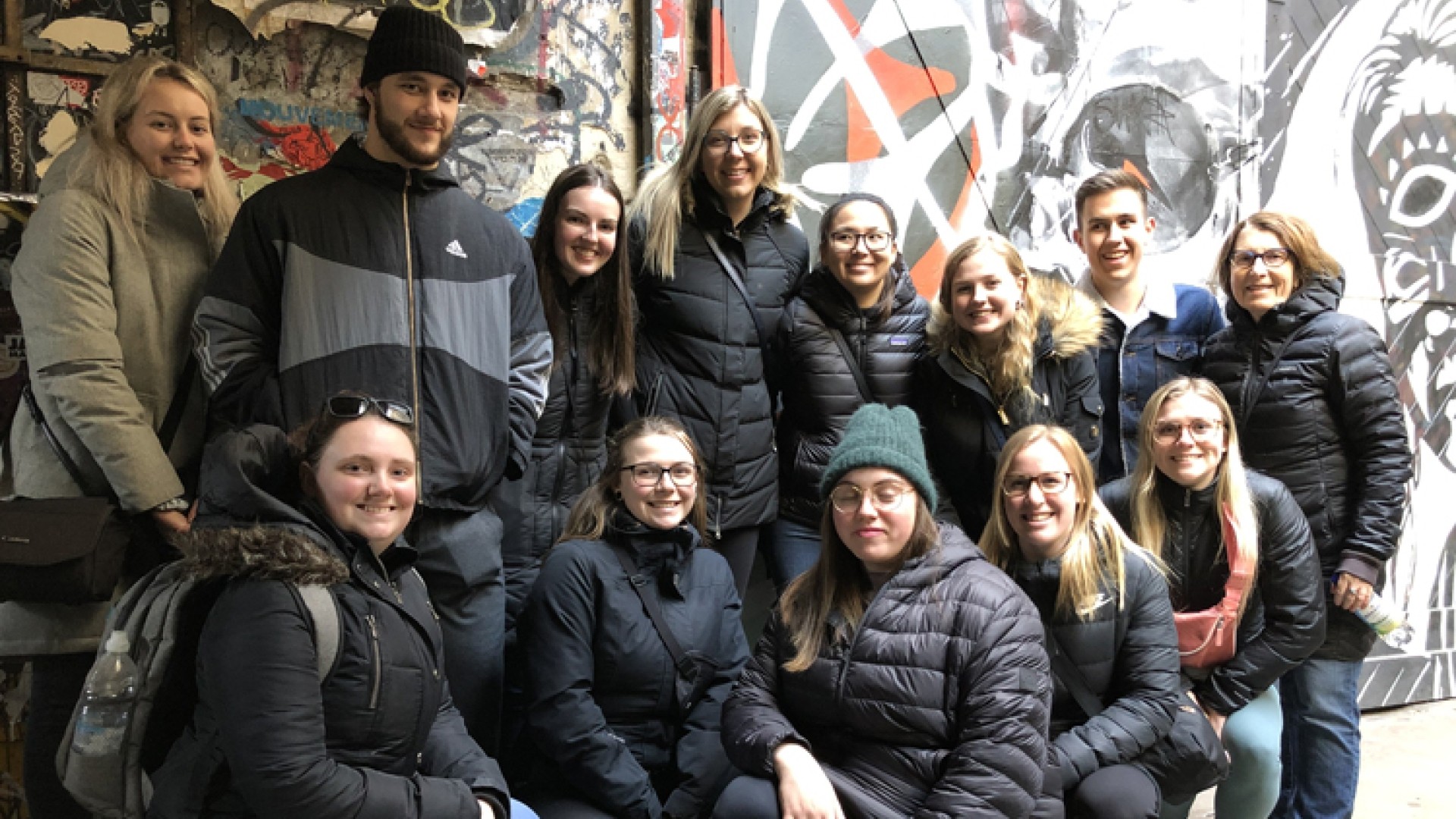
A unique collection of art works created behind the barbed wire of a German Nazi concentration camp and extermination centre has received support from a group of StFX students.
Earlier this year, 12 StFX students, accompanied by faculty leader and psychology professor Dr. Margo Watt, participated in an Immersion Service Learning experience to Germany and Poland, where among other places, they visited Auschwitz-Birkenau. The Auschwitz Museum possesses among its holdings a unique collection of works created behind the barbed wire of a German Nazi concentration camp, where art took on extraordinary significance.
The students, who had fundraised in advance of the trip, decided they wanted to donate the money to the Auschwitz-Birkenau Museum, specifically the art exhibit and workshop they attended.
“In February, as a part of an Immersion Service Learning trip, we had the chance to travel to Germany and Poland and visit important historic sites relating to WW2 and Nazi concentration camps,” says Tolmie Belyea, one of the students along with Emma Munroe, Gracie Grieve, Sarah Hopper, Sophie Hadley, Cole Curnew, Alice Bruce, Gregg Anderson, Katie MacIntosh, Madison MacInnis, Marissa MacInnis and Emily Henry.
“Following our trip, we decided as a group that the money we had fundraised earlier in the year should be donated rather than used to cover our expenses. After careful consideration, we chose to donate the funds to the Auschwitz-Birkenau Memorial and Museum located in Oświęcim, Poland, specifically we requested that our donation be directed to supporting the art exhibit in which we had the opportunity to participate in a workshop.”

Ms. Belyea says the exhibit featured works made secretly and illegally; works made on orders from the SS to exploit prisoners’ talents; works made by prisoner artists for the Lagermuseum that the Germans set up; and works made after the war by former prisoners.
“The workshop was particularly impactful to our group as it demonstrated the reality about life in the camps, illustrated the need for emotional and aesthetic experiences and portrayed the emotions and internal feels of the victims. We felt these works of art truly represented the emotions that accompanied the prisoners every day and are an important document in history.”
Ms. Belyea says learning about World War Two and the Holocaust from reading a textbook, watching videos, or listening to lectures does not compare to learning while walking through various concentration camps. “Seeing the camps right in front of me added a whole new perspective and set of emotions to my understanding of the horrific events. Personally, this experience made the horrors of the Holocaust real and made me question: What possessed ordinary people to commit such evil acts? What would I have done? How can I be more like those who helped?”
Fellow participant Sophie Hadley, who is entering her senior year of a history degree at StFX, says The Centre for Dialogue and Prayer were amazing hosts during their time at Auschwitz-Birkenau.
“They really help you unpack what you have witnessed and make an effort to ensure that your stay is as comfortable as it can be given the proximity to the camp. I think the camp was impactful in a lot of ways. Some parts are in ruins and others have been preserved so as to help people understand what happened there. The Art Workshop we attended seemed like an interesting new way to understand history that I had previously not encountered before. Many of the paintings – some done by people while they were in the camp, and others when they survived the camp – were very informative about the time. Some of the interned people at the camps commissioned by the Nazi officials to create paintings, which I had not known before the workshop.
“I think this way of helping people understand history was different and I would hope more people get to experience a workshop like that, hence our contribution to the workshop.”
Ms. Hadley says they had all paid for the trip in full and as nice as it would have been to get even a small portion of that back through their fundraising efforts (something they initially considered), they discovered throughout their time in Germany and Poland that many of the museums accepted donations to keep up the exhibits and curate new ones. “We felt that as a slightly more unconventional service learning trip, where a bigger part of our trip was learning rather than service, this would be the best way to incorporate the service aspect.”
Ms. Hadley says the experience had a huge impact on her.
“My focus in history is now on European studies and moving forward I would like to continue my research in Holocaust Education and WW2. I feel like the trip not only provided me with a lot of opportunities to grow academically, but also as a person. I made a lot of new friends, and the connections made with even just our tour guides was so amazing.
“My minor is in religion as well so I am fascinated by culture – you can guarantee I will be back to explore the two countries even more.”
Agnieszka Sieradzka, an art historian and curator at The Auschwitz-Birkenau State Museum, wrote Dr. Watt to thank the StFX students for their donation. “We are very grateful for making a donation when the museum is going through a financial crisis caused by the coronavirus. We will use these funds directly to protect original objects and improve storage and presentations of works of art from our collection.”

